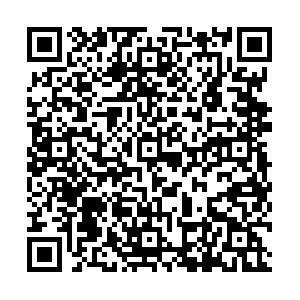| [1] |
Wong CX, Lau DH, Sanders P. Atrial fibrillation epidemic and hospitalizations: how to turn the rising tide[J]. Circulation, 2014, 129(23): 2361-3. doi: 10.1161/CIRCULATIONAHA.114.010073
|
| [2] |
Romero I, Nedios S, Kriatselis C. Diagnosis and management of atrial fibrillation: an overview[J]. Cardiovasc Ther, 2014, 32(5): 242-52. doi: 10.1111/cdr.2014.32.issue-5
|
| [3] |
Zoni-Berisso M, Lercari F, Carazza T, et al. Epidemiology of atrial fibrillation: European perspective[J]. Clin Epidemiol, 2014, 6: 213-20. https://www.ncbi.nlm.nih.gov/pubmed/24966695
|
| [4] |
丁绍祥.房颤发病机制研究进展[J].中国老年学杂志, 2014, 34(23): 6834-6. http://www.cnki.com.cn/Article/CJFDTOTAL-ZLXZ201423152.htm
|
| [5] |
丁绍祥. J波和2相折返形成离子流机制研究进展[J].中国老年学杂志, 2012, 32(12): 2676-8. http://www.cnki.com.cn/Article/CJFDTOTAL-ZLXZ201212115.htm
|
| [6] |
Sasaki N, Okumura Y, Watanabe I, et al. Pulmonary vein remnant as a trigger site for atrial fibrillation [J]. Circ J, 2013, 77(2): 494-6. doi: 10.1253/circj.CJ-12-1053
|
| [7] |
Eckman MH, Wise RE, Speer B, et al. Integrating real-time clinical information to provide estimates of net clinical benefit of antithrombotic therapy for patients with atrial fibrillation[J]. Circ Cardiovasc Qual Outcomes, 2014, 7(5): 680-6. doi: 10.1161/CIRCOUTCOMES.114.001163
|
| [8] |
Lemery R. Treatment of atrial fibrillation: should we advocate life-style changes or ablation strategies to maintain sinus rhythm? Boot cAMP for atrial fibrillation[J]. J Cardiovasc Electrophysiol, 2014, 25(9): 939-40. doi: 10.1111/jce.2014.25.issue-9
|
| [9] |
Drca N, Wolk A, Jensen-Urstad M, et al. Atrial fibrillation is associated with different levels of physical activity levels at different ages in men [J]. Heart, 2014, 100(13): 1037-42. doi: 10.1136/heartjnl-2013-305304
|
| [10] |
Woods CE, Olgin J. Atrial fibrillation therapy now and in the future: drugs, biologicals, and ablation[J]. Circ Res, 2014, 114(9): 1532-46. doi: 10.1161/CIRCRESAHA.114.302362
|
| [11] |
Martinez C, Katholing A, Freedman SB. Adverse prognosis of incidentally detected ambulatory atrial fibrillation. A cohort study [J]. Thromb Haemost, 2014, 112(2): 276-86. doi: 10.1160/TH4-04-0383
|
| [12] |
Själander S, Själander A, Svensson PJ, et al. Atrial fibrillation patients do not benefit from acetylsalicylic acid [J]. Europace, 2014, 16(5): 631-8. doi: 10.1093/europace/eut333
|
| [13] |
Holmes DR, Kar S, Price MJ, et al. Prospective randomized evaluation of the Watchman Left Atrial Appendage Closure device in patients with atrial fibrillation versus long-term warfarin therapy: the PREVAIL trial [J]. J Am Coll Cardiol, 2014, 64(1): 1-12. doi: 10.1016/j.jacc.2014.04.029
|
| [14] |
Price MJ. Left atrial appendage occlusion with the WATCHMAN™ for stroke prevention in atrial fibrillation[J]. Rev Cardiovasc Med, 2014, 15(2): 142-51. https://www.ncbi.nlm.nih.gov/pubmed/25051131
|
| [15] |
Syed FF, Desimone CV, Friedman PA, et al. Left atrial appendage exclusion for atrial fibrillation [J]. Cardiol Clin, 2014, 32(4): 601-25. doi: 10.1016/j.ccl.2014.07.006
|
| [16] |
Haegeli LM, Calkins H. Catheter ablation of atrial fibrillation: an update [J]. Eur Heart J, 2014, 35(36): 2454-9. doi: 10.1093/eurheartj/ehu291
|
| [17] |
Amasyali B, Kilic A. Atrial mass reduction in radiofrequency catheter ablation for long-standing persistent atrial fibrillation: do we really ablate the sick or the healthy tissue[J]. Int J Cardiol, 2014, 172(3): 599. doi: 10.1016/j.ijcard.2014.01.093
|
| [18] |
Miyazaki S, Taniguchi H, Kusa S, et al. Factors predicting an arrhythmogenic superior vena cava in atrial fibrillation ablation: insight into the mechanism [J]. Heart Rhythm, 2014, 11(9): 1560-6. doi: 10.1016/j.hrthm.2014.06.016
|
| [19] |
Al-Khatib SM, Allen Lapointe NM, Chatterjee R, et al. Rate-and rhythm-control therapies in patients with atrial fibrillation: a systematic review [J]. Ann Intern Med, 2014, 160(11): 760-73. doi: 10.7326/M13-1467
|
| [20] |
Calkins H. Has the time come to recommend catheter ablation of atrial fibrillation as first-line therapy? J]. JAMA, 2014, 311(7): 679-80. doi: 10.1001/jama.2014.468
|
| [21] |
Morillo CA, Verma A, Connolly SJ, et al. Radiofrequency ablation vs antiarrhythmic drugs as first-line treatment of paroxysmal atrial fibrillation (RAAFT-2): a randomized trial[J]. JAMA, 2014, 311 (7): 692-700. doi: 10.1001/jama.2014.467
|
| [22] |
Calkins H, Kuck KH, Cappato R, et al. 2012 HRS/EHRA/ECAS expert consensus statement on catheter and surgical ablation of atrial fibrillation: recommendations for patient selection, procedural techniques, patient management and follow-up, definitions, endpoints, and research trial design[J]. Europace, 2012, 33(2): 171-257. http://www.hrsonline.org/Policy-Payment/Clinical-Guidelines-Documents/Expert-Consensus-Statement-on-Catheter-and-Surgical-Ablation-of-Atrial-Fibrillation-AFib/2012-Catheter-and-Surgical-Ablation-of-AFib
|
| [23] |
Takigawa M, Takahashi A, Kuwahara T, et al. Long-term follow-up after catheter ablation of paroxysmal atrial fibrillation: the incidence of recurrence and progression of atrial fibrillation [J]. Circ Arrhythm Electrophysiol, 2014, 7(2): 267-73. doi: 10.1161/CIRCEP.113.000471
|
| [24] |
Cosedis Nielsen J, Johannessen A, Raatikainen P, et al. Radiofrequency ablation as initial therapy in paroxysmal atrial fibrillation [J]. N Engl J Med, 2012, 367(17): 1587-95. doi: 10.1056/NEJMoa1113566
|
| [25] |
Wang J, Sun YM, Yang YQ. Mutation spectrum of the GATA4 gene in patients with idiopathic atrial fibrillation [J]. Mol Biol Rep, 2012, 39(8): 8127-35. doi: 10.1007/s11033-012-1660-6
|
| [26] |
丁绍祥.早复极发生机制的研究进展[J].天津医药, 2012, 40(10): 1081-4. http://www.cnki.com.cn/Article/CJFDTOTAL-TJYZ201210055.htm
|
| [27] |
Weijs B, de Vos CB, Tieleman RG, et al. The occurrence of cardiovascular disease during 5-year follow-up in patients with idiopathic atrial fibrillation [J]. Europace, 2013, 15(1): 18-23. doi: 10.1093/europace/eus203
|
| [28] |
丁绍祥, 柳茵, 刘维军, 等.心房肌电重构能促进房颤吗[J].医学争鸣, 2014, 5(2): 44-7. http://www.cnki.com.cn/Article/CJFDTOTAL-DSJY201402018.htm
|
| [29] |
Lau DH, Kalman J, Sanders P. Management of recent-onset sustained atrial fibrillation: pharmacologic and nonpharmacologic strategies [J]. Clin Ther, 2014, 36(9): 1151-9. doi: 10.1016/j.clinthera.2014.08.002
|
| [30] |
García Seara J, Raposeiras Roubin S, Gude Sampedro F, et al. Failure of hybrid therapy for the prevention of long-term recurrence of atrial fibrillation [J]. Int J Cardiol, 2014, 176(1): 74-9. doi: 10.1016/j.ijcard.2014.06.042
|
| [31] |
Aparina OP, Chikhireva LN, Mironova NA, et al. Role of atrial structural and functional changes in the development and progression of atrial fibrillation [J]. Ter Arkh, 2014, 86(1): 71-7. https://www.researchgate.net/publication/261799231_Role_of_atrial_structural_and_functional_changes_in_the_development_and_progression_of_atrial_fibrillation
|
| [32] |
丁绍祥.心房颤动时心房肌结构重构和电重构的作用及意义[J].中国循环杂志, 2014, 29(2): 155-7. http://www.cnki.com.cn/Article/CJFDTOTAL-ZGXH201402027.htm
|
| [33] |
Nattel S, Guasch E, Savelieva I, et al. Early management of atrial fibrillation to prevent cardiovascular complications [J]. Eur Heart J, 2014, 35(22): 1448-56. doi: 10.1093/eurheartj/ehu028
|
| [34] |
丁绍祥, 柳茵, 刘维军, 等.住院患者早复极发生率及临床意义[J].武汉大学学报:医学版, 2013, 34(3): 460-3. http://www.cnki.com.cn/Article/CJFDTOTAL-HBYK201303039.htm
|
| [35] |
Ball J, Carrington MJ, Mcmurray JJ, et al. Atrial fibrillation: profile and burden of an evolving epidemic in the 21st century[J]. Int J Cardiol, 2013, 167(5): 1807-24. doi: 10.1016/j.ijcard.2012.12.093
|

 点击查看大图
点击查看大图





 下载:
下载:
